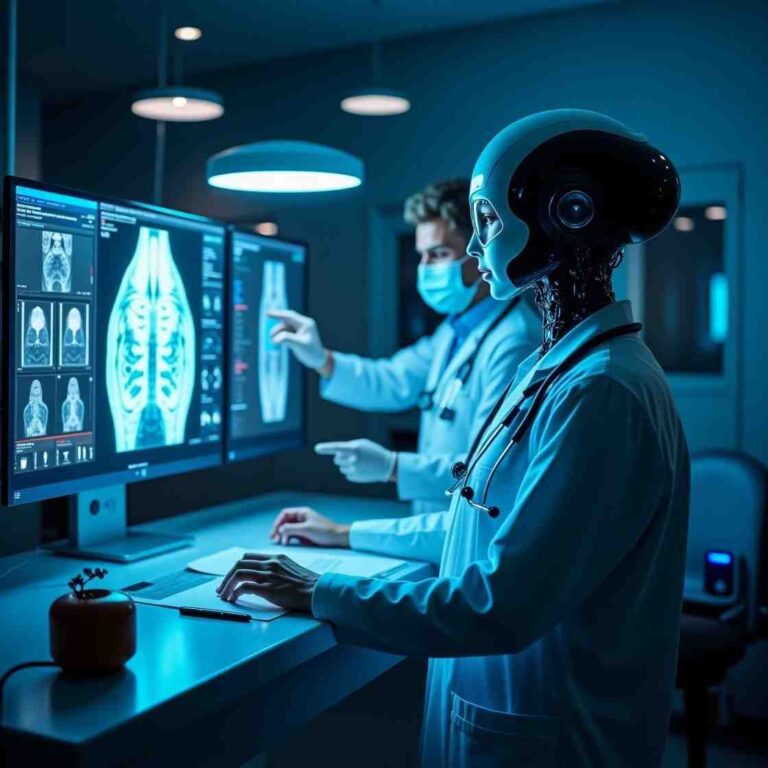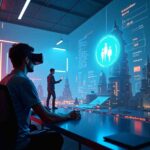Table of Contents
Introduction
AI-powered ad optimization is revolutionizing digital marketing by enhancing targeting, personalization, and efficiency. Businesses using AI-driven ad strategies can significantly increase conversions while reducing ad spend. In this guide, we’ll explore how AI improves ad performance, key strategies for implementation, and proven techniques to maximize conversions.
What is AI-Powered Ad Optimization?
AI-powered ad optimization utilizes artificial intelligence and machine learning algorithms to analyze data, predict user behavior, and automate ad campaigns for better performance. These systems continuously learn from user interactions, optimizing ads in real time for higher engagement and conversion rates.
Benefits of AI in Ad Optimization
- Enhanced Targeting – AI analyzes user data to deliver ads to the most relevant audience.
- Improved Personalization – AI customizes ads based on user preferences and behaviors.
- Cost Efficiency – Automated bidding ensures optimal ad spend and reduced wastage.
- Real-Time Adjustments – AI continuously tweaks campaigns for maximum effectiveness.
- Performance Tracking – Advanced analytics provide deep insights into campaign success.
Pros and Cons of AI-Powered Ad Optimization
Pros
✔ Higher ROI – AI optimizes budget allocation for the best returns.
✔ Better Ad Targeting – AI ensures ads reach the right audience.
✔ Time-Saving – Automates tasks, freeing up time for strategic planning.
✔ Data-Driven Decisions – AI analyzes large data sets for precise optimization.
✔ Real-Time Adjustments – AI adapts campaigns dynamically for better performance.
Cons
- High Initial Investment – AI tools and platforms can be expensive.
- Complex Setup – Requires expertise for proper implementation.
- Data Privacy Concerns – AI relies on user data, raising privacy issues.
- Limited Creativity – AI optimizes based on data but lacks human creativity.
- Over-Reliance on Automation – Full automation can lead to missing human insights.
Key AI-Powered Strategies for Higher Conversions
1. AI-Driven Audience Segmentation
AI tools analyze demographics, behavior, and engagement patterns to segment audiences accurately. This helps in delivering highly targeted ads that resonate with specific user groups.
Pro Tip: Use AI-powered platforms like Google Ads and Facebook AI to refine audience targeting and increase engagement rates.
2. Predictive Analytics for Conversion Optimization
Predictive analytics helps marketers understand user intent and anticipate purchasing behavior. AI tools analyze historical data to predict which users are most likely to convert.
Example: Amazon’s AI-driven recommendation engine suggests products based on past purchases, leading to higher conversion rates.
3. Dynamic Creative Optimization (DCO)
DCO uses AI to automatically adjust ad elements such as headlines, images, and CTAs based on real-time performance data. This ensures that each user sees the most relevant and high-converting ad version.
Best Practice: Use AI-powered tools like Adzooma and Persado to automate and optimize ad creatives dynamically.
4. Automated Bidding Strategies
AI-powered bidding tools analyze real-time auction data to place the most cost-effective bids for ad placements. This maximizes ROI while ensuring ads reach the right audience at the best price.
Example: Google’s Smart Bidding automatically adjusts bids based on conversion likelihood, reducing ad spend wastage.
5. AI-Enhanced A/B Testing
Traditional A/B testing takes time, but AI accelerates the process by automatically analyzing multiple ad variations and selecting the best-performing version in real time.
Case Study: A brand using AI-based A/B testing increased its conversion rate by 35% within a month.
6. Chatbots & AI-Powered Customer Engagement
Integrating AI chatbots in ad campaigns helps engage users instantly, answer queries, and guide them toward conversion.
Tip: Use chatbots like Drift or ManyChat to interact with potential customers in real time, boosting conversion rates.
7. AI-Based Sentiment Analysis
AI-powered sentiment analysis tools analyze user reactions and comments on ads to gauge audience perception. This helps marketers adjust campaigns to align with customer preferences.
Example: Brands use AI sentiment analysis to detect negative feedback and improve ad messaging for better engagement.
8. AI-Powered Video Ads
Video content is highly engaging, and AI enhances video ads by optimizing thumbnails, captions, and call-to-actions based on user interactions.
Pro Tip: Use AI-driven video ad platforms like Magisto or Pictory to create high-converting video ads effortlessly.
9. AI-Powered Social Media Ads
AI tools analyze user interactions on social media to optimize ad placement and content. This ensures that ads reach the most relevant audience on platforms like Facebook, Instagram, and LinkedIn.
Best Practice: Leverage AI-driven tools like Hootsuite Insights to automate and optimize social media ad campaigns.
10. AI-Driven Retargeting Campaigns
AI enhances retargeting by analyzing user behavior and displaying personalized ads to potential customers who have previously interacted with a brand.
Example: E-commerce brands use AI-powered retargeting to show customized ads to visitors who abandoned their shopping carts, increasing conversion rates.
How to Implement AI in Your Ad Campaigns
- Choose the Right AI Tools – Platforms like Google Ads AI, Adzooma, and Persado offer automated ad optimization.
- Set Clear Conversion Goals – Define specific KPIs such as CTR, CPA, and ROI.
- Leverage AI-Driven Insights – Regularly analyze performance data and tweak campaigns accordingly.
- Automate Ad Placements – Use AI to determine the best ad placements across multiple platforms.
- Continuously Optimize – AI learns over time, so ongoing adjustments are essential.
Measuring Success: Key Metrics to Track
✔ Click-Through Rate (CTR) – Measures ad engagement.
✔ Conversion Rate – Determines the percentage of users taking the desired action.
✔ Cost Per Acquisition (CPA) – Evaluates campaign cost-effectiveness.
✔ Return on Ad Spend (ROAS) – Measures profitability of ad campaigns.
✔ Bounce Rate – Indicates if users are engaging with the landing page.
Conclusion
AI-powered ad optimization is the future of digital marketing, helping businesses maximize conversions with minimal effort. By leveraging AI-driven targeting, predictive analytics, and automated bidding, brands can enhance ad performance, reduce costs, and achieve better ROI.
Take Action Today! Start using AI-powered tools to optimize your ad campaigns and see a boost in conversions instantly.
Disclaimer
This article is for informational purposes only. Results may vary based on multiple factors. Always test AI-powered strategies before full-scale implementation.








